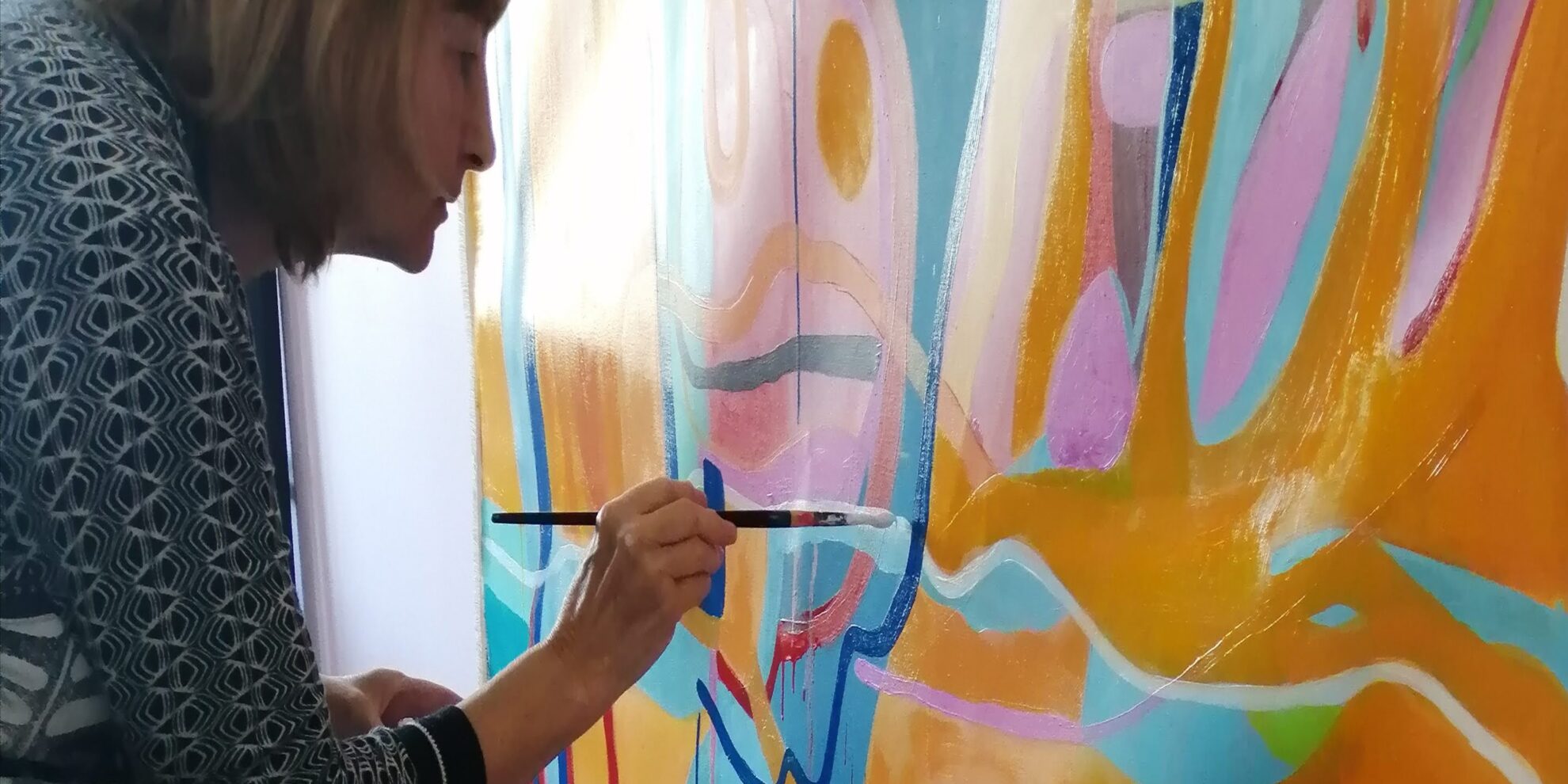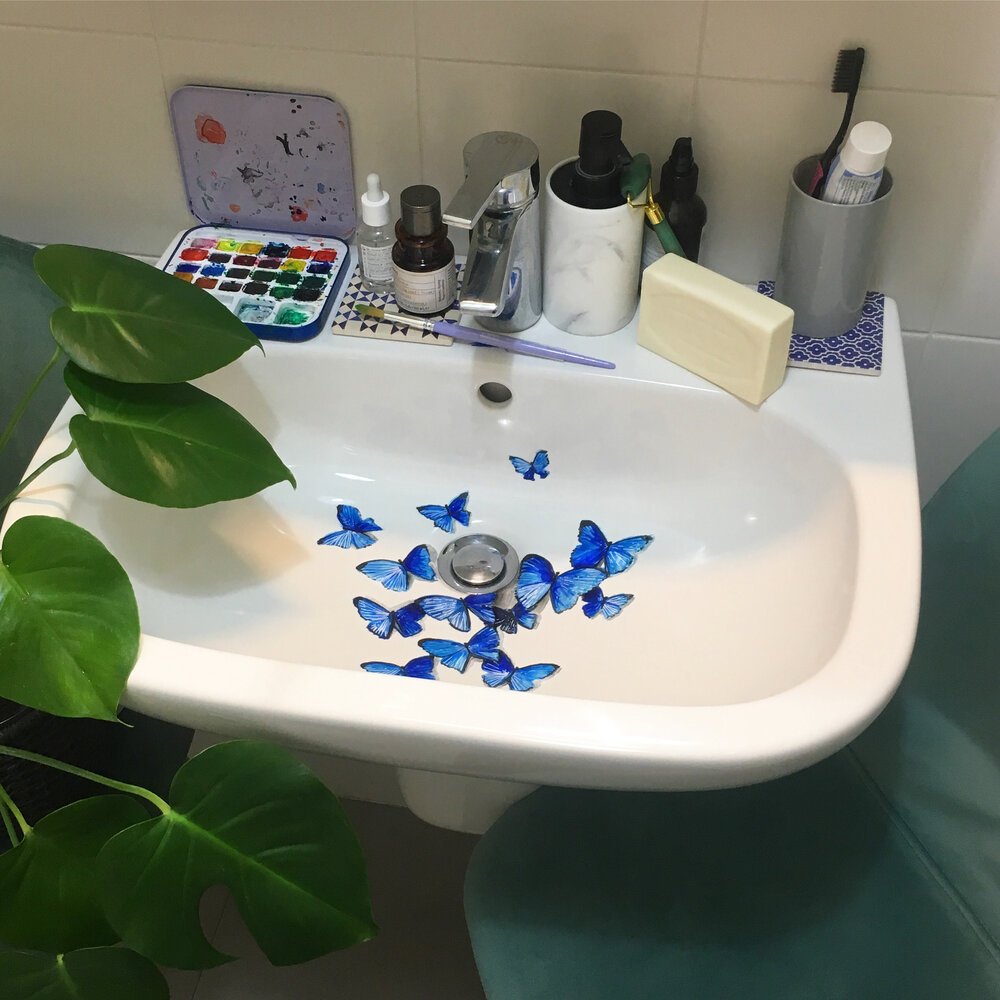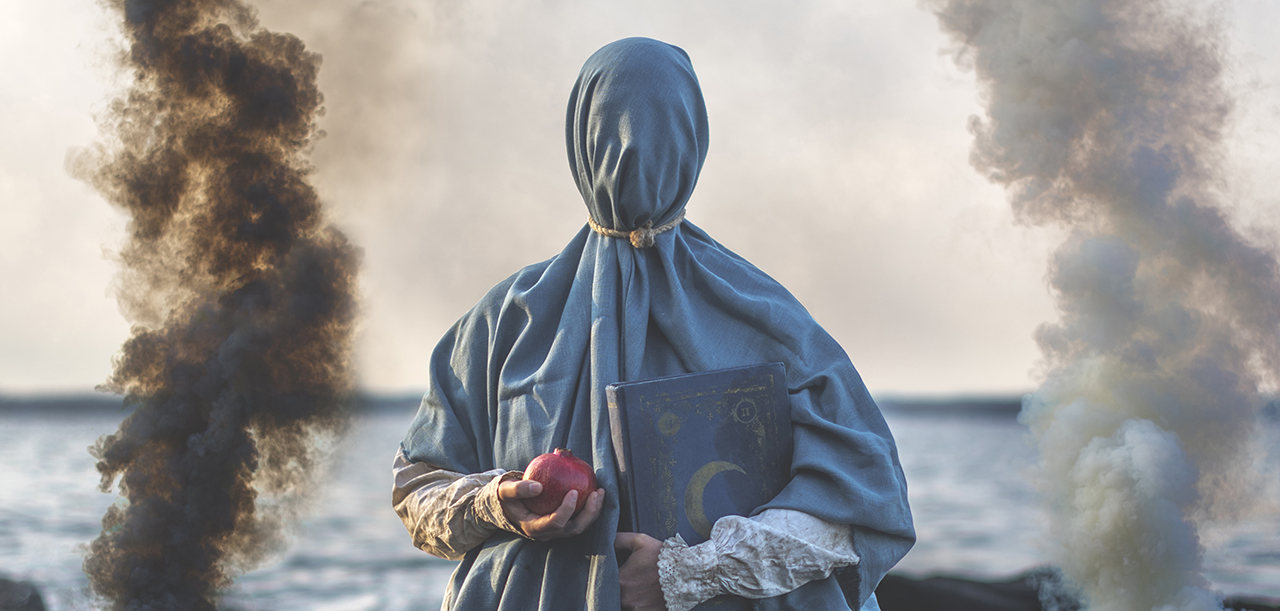Once in a while, things can tend to get a little too serious. The global pandemic, tumultuous politics across the globe, and isolation have taken their toll on many of us. So it is no surprise that we turn to art to lift our spirits.
One artist leading the charge is Chrissy Guest. With her abstract style and vivid palette, her pieces are a breath of joyous hope in an uncertain climate. We spoke to the artist herself, to see what influences her and how her influences have changed in the last year.
CulturePledge: The first thing that struck me, was that you admit that there is not always a purpose in your art. This is quite a bold, strong statement from an artist. Do you think art needs or should have a purpose?

Chrissy Guest: I’m an abstract artist, and the most difficult thing to do, is to clear the visual mind from the clutter and influences of everyday life. Only then can painting become spontaneous and unique. It’s about reaching into the subconscious mind to allow it to control the brush on canvas.
In my work, more purpose may appear in color choice, and this is due in part, to my knowledge of color theory. How it affects the balance of a painting and the mood. There will of course always be a visual language that may relate to the outer world, but this won’t be used deliberately and will be open to interpretation.
I don’t think all art should have a purpose. You don’t need to understand a painting, you just need to love it.
CP: You talk about Kandinsky’s influence on your work a lot. I see your work as less jarring and angular than his. Why do you think your work comes across as less violent?
CG: I really didn’t appreciate how much influence my historical studies of other artists had on my work. It gradually dawned on me that I was using color to speak in a similar way to Kandinsky. He was aware of how color could influence emotion, it had a power of its own. In particular, the tension between colors and their relationship with each other.
He also played with shapes in the same way as I do, sometimes symbolic, or just to create a visual balance to the composition. I suppose the difference is that I am still on a journey to uniqueness, finding my artistic voice, and this has gradually developed into a softer representation than Kandinsky.
CP: Looking through your work, I believe I can see distinct periods where certain colors or palettes take over. Can you explain your process when it comes to color choices?

CG: As discussed, mood and emotion are affected by colour, and this therefore does affect me and my choice of palette. It can sometimes be a simple thing such as a change in the light in the studio, as the seasons change, my mood on a particular day, or something I’ve seen that inspires me.
I do like to try and paint in limited collections, so maybe two or three paintings in a similar colour, until my mood switches off from it, and there’s an overwhelming need in me to change the palette. This all happens without prior planning and is always very exciting.
CP: It has been a very turbulent year. How have global events impacted your work?
CG: My work became even more popular and it’s been difficult to keep up with demand. I paint in many layers of oils and these take time to produce and to dry. I’m still playing catch up, but I won’t be rushed.
Most of my clients feedback is that they find my paintings a colourful addition to their homes and very uplifting in these troubled times. With more people remaining in their homes, the focus has turned to décor. It’s also meant that money which would normally be spent on holidays etc., was freed up to spend on other luxuries such as art.
This has become a huge issue for most artists. The pandemic resulted in delays, particularly with international orders. We now have the additional influence of Brexit, with couriers now unable to cope with the volume and sadly many paintings getting held in customs. EU buyers, now have to pay customs duty on artwork the uncertainty of which has greatly impacted buyer’s confidence.
There are signs of a recovery, and my clients have been patient and understanding during these troubled times.

CP: What about domestically? Did you find that lockdown changed your creative process?
CG: There have been times in my career, where I have longed to concentrate solely on my creativity. Like most people, there is life to embrace outside my studio, so there is always a conflict. Lockdown gave me the time to just paint every day without any interruption. I treasured this, and I believe it’s helped me develop my work to a much higher level.
It’s been an emotional roller coaster, and this has affected the way I’ve approached my work each day. On occasions, difficult to clear the mind, and I’m certain these mood changes are apparent in the paintings somewhere, I just can’t always see them!
CP: I see that you have a lot about women’s day and being chosen as part of Artfinders celebrating women collection. What influence does gender have on your creative process, if any?
Historically, women had to fight to become recognized as serious artists. Often overlooked, some, resorted to using male pseudonyms. However, in the 19th Century, social and economic changes saw more women enter the arts scene with success.
One artist in particular, Hilma af Klint (1862–1944) has had quite an impact on me. She felt she was “being directed by a force that would literally guide her hand“.
“The pictures were painted directly through me, without any preliminary drawings, and with great force. I had no idea what the paintings were supposed to depict; nevertheless I worked swiftly and surely, without changing a single brush stroke“.
This simple quote made so much sense to me, and I immediately understood that my work could exist without meaning or reference to reality. After her death, she left a collection of more than 1,200 paintings and 125 diaries, which sadly had never been exhibited in a major art venue. Her story is a complex one, but it resonated with me, and makes me more determined to carry on despite the many setback I have encountered in the past and will do so in the future.
You Don’t Need to Understand a Painting, You Just Need to Love It
With the COVID climate finally lifting and life returning to seeming normality in some places, how will artists such as Guest fare? Are we entering a brave new world where colorful, bold statements become the next trend? Could the post-COVID artworld bring us our own version of the Roaring Twenties, filled with art that pushes aside purpose and instead aims to make us happy?
The bottom line is that you really don’t need to understand art to appreciate it. If you loved Guest’s artwork as much as we did, then you can view the rest of her works on Artfinder. Let us know in the comments or on social media what you think!






I am constantly impressed by the depth and detail in your posts You have a gift for making complex topics easily understandable